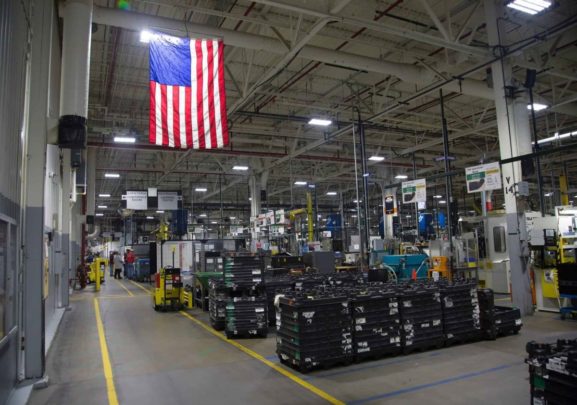Integrate AI in Manufacturing to Raise the Bar

By Lisa Anderson
According to Polaris Market Research, the market size of artificial intelligence (AI) in manufacturing is predicted to grow more than 41 percent during the next decade. Although the latest Sikich Industry Pulse found that less than 20 percent of manufacturers have started to implement AI, those wanting to thrive in the next decade are pursuing AI strategies that make sense to support their business objectives. AI can help manufacturers target where to focus and automate mundane tasks.
There are many uses for AI in manufacturing. A classic example is predictive maintenance. Instead of preventative maintenance, target where to maintain with predictive maintenance to maximize your efforts. Collaborative robots (cobots) work alongside people and often can perform tasks that require heavy lifting. Digital twins are virtual models of physical objects or layouts, and they can receive information about the object through sensors to get information about maintenance needs, etc.
On the software side, manufacturers are using robotic process automation (RPA) to handle high-volume, repetitive tasks that can be automated. For example, in working with a water tank manufacturer, we wanted to upgrade the use of ERP and start using MRP (material requirements planning) recommendations for purchasing. Before turning MRP on, we had to perform a cleanup of data and add routing data steps in the system. The team was lean, and it was estimated to take a few months to prepare for go-live. The executive team did not want to wait to improve service and increase efficiencies, so a technical expert on the team used RPA to write a code to automate the setups. We completed the preparation in three days instead of three months and started gaining results.
Another application for AI in manufacturing is a lights-out factory that runs with robots. Although full lights-out factories are rare, this application is gaining momentum across the globe especially as workforce participation rates remain low. Manufacturers realize they need to gain control of their success and are reshoring and margins remain tight with high material and labor costs. Robots can operate around the clock without lunches, breaks and workers compensation claims.
In one example, an industrial manufacturing client struggled to find the talent needed to run its manufacturing operations. They couldn’t keep up with demand, employees were frustrated and customers were unhappy. They purchased a robot to perform production in a key bottleneck area of the facility; however, the robot couldn’t produce around the clock because there was nowhere to store the finished product on the second and third shifts without material handlers. Thus, the engineering team developed an automated way for the product to be moved from the point of production. Past-due deliveries plummeted as the system came online.
AI is also prevalent in supply chain applications that support manufacturing success. Sales forecasting and demand planning can now be supported with AI algorithms to better predict demand. Even in the most industrial of manufacturers, demand patterns have been difficult to predict, creating a need for AI to get in front of demand. AI is also used in inventory management to prevent bottlenecks and predict what’s needed.
AI requires proactive design so that you can limit the expenses and minimize the high-skilled resources required to go live. Start with a rapid assessment of your business requirements, process and technical infrastructure and resources. Select a pilot to test your plans and results will follow.
Lisa Anderson is the founder and president of LMA Consulting Group, Inc., a consulting firm that specializes in manufacturing strategy and end-to-end supply chain transformation that maximizes the customer experience and enables profitable, scalable, dramatic business growth. She recently released “SIOP (Sales Inventory Operations Planning): Creating Predictable Revenue and EBITDA Growth”, an e-book on how to better navigate supply chain chaos and ensure profitable, scalable business growth. A complimentary download can be found at
www.lma-consultinggroup.com/siop-book/.


